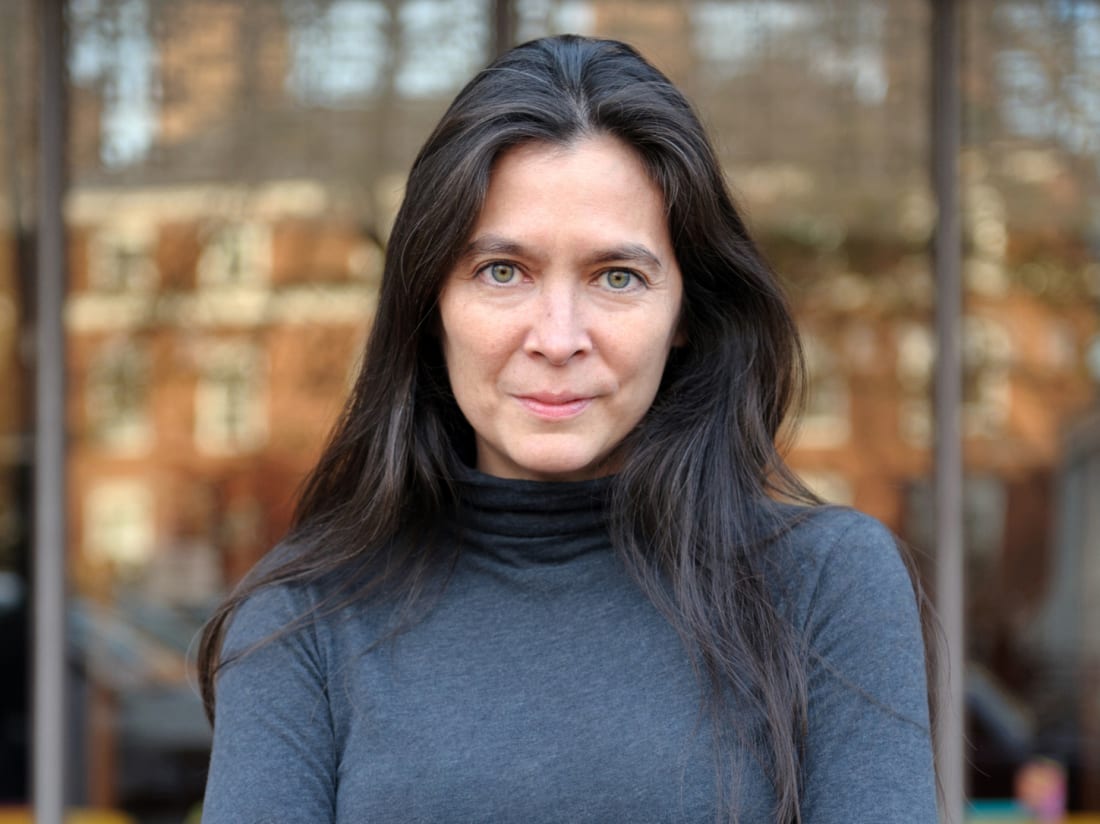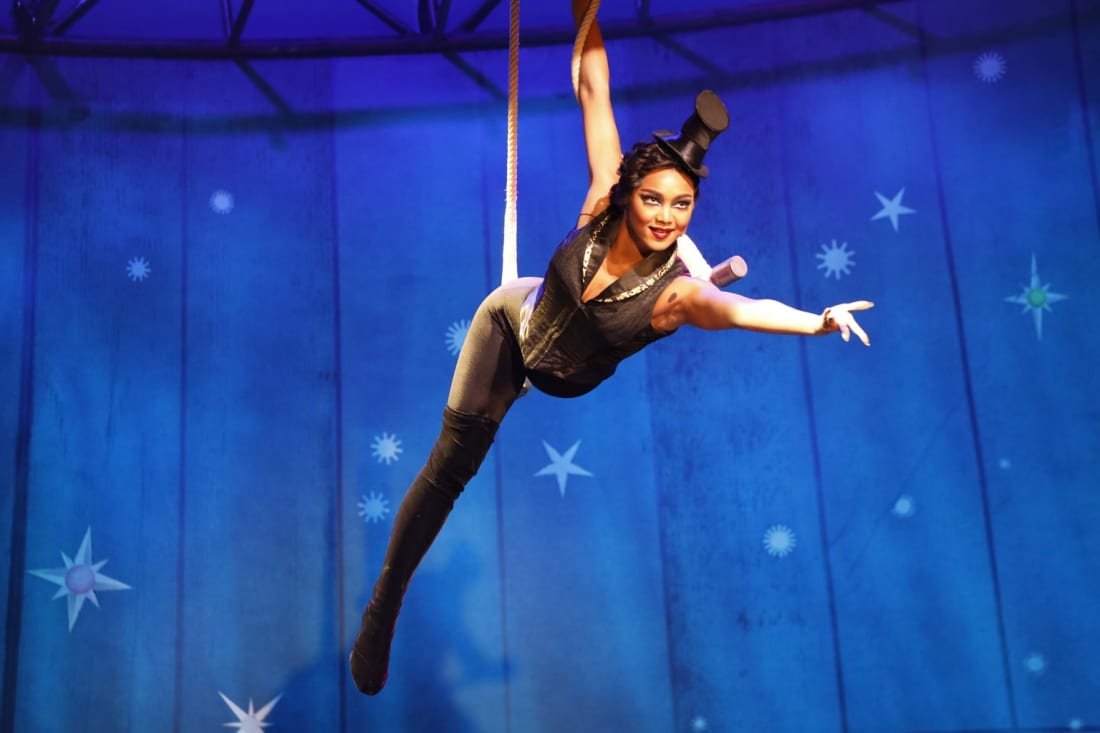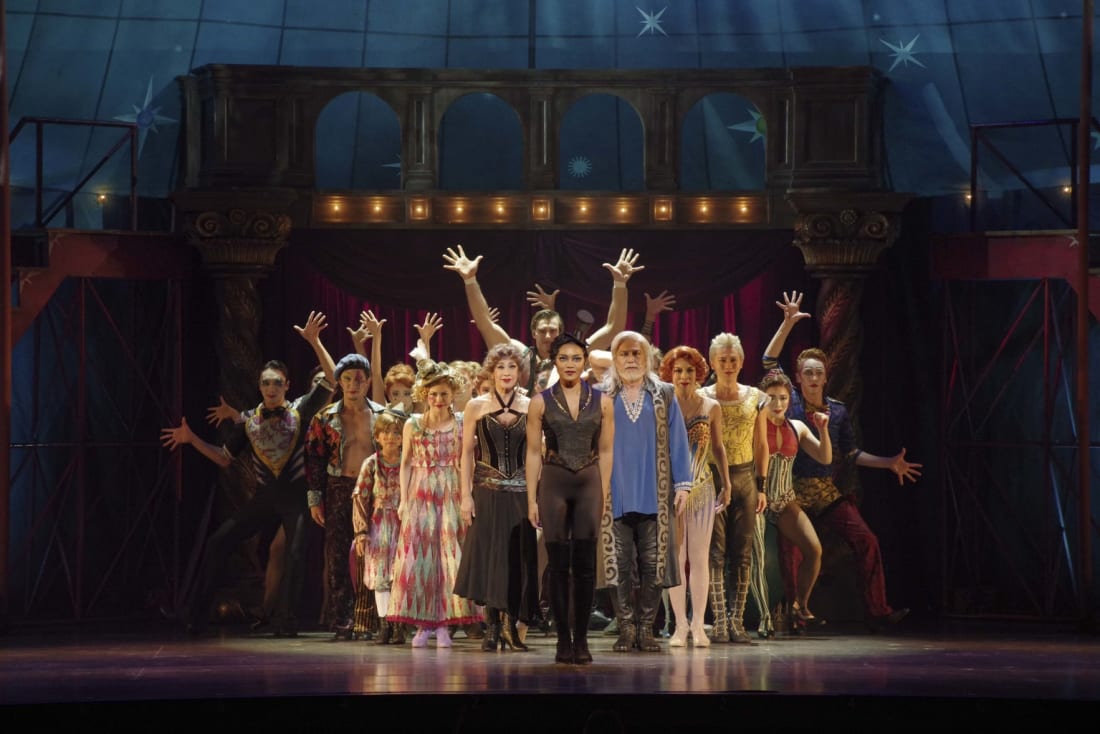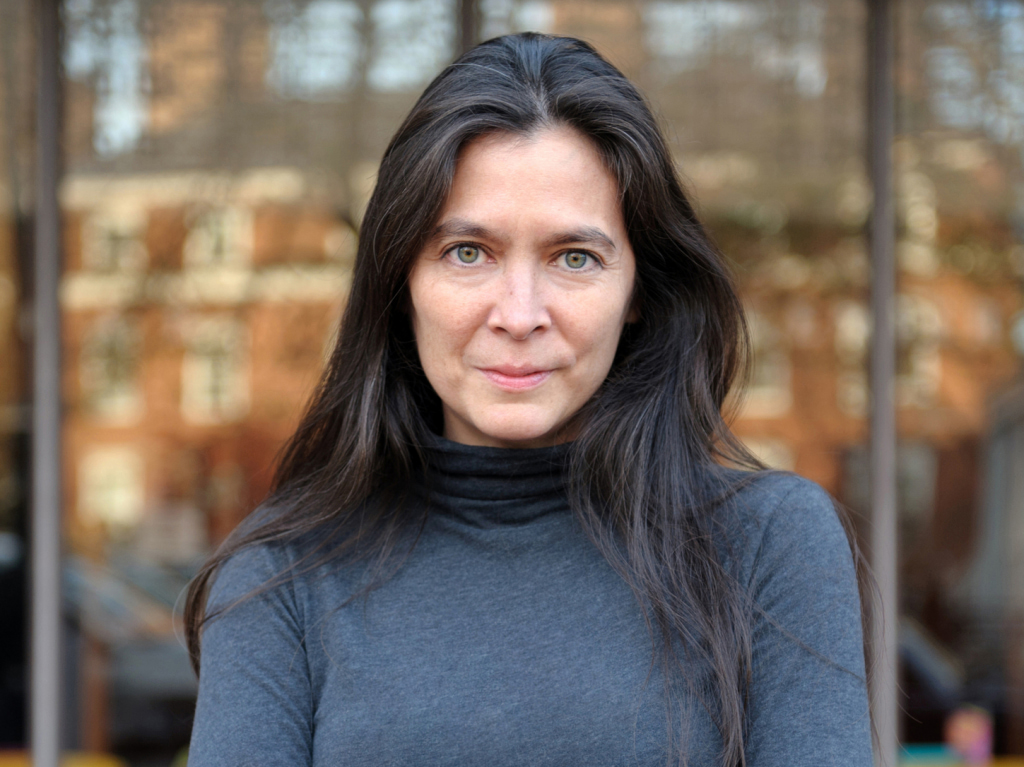True to its 2013 source, the Japanese production of the Tony-winning Broadway musical revival of “Pippin” turns the physicality up to 11. Most of the choreography is acrobatic, with actors contorting themselves into seemingly impossible positions, and some is aggressively sensual. Yet on a stage teeming with athletic young bodies in skintight costumes, the one that draws the most enthusiastic applause belongs to 73-year-old Mie Nakao.
The veteran actress’s star turn as Berthe (a role she rotates with Beverly Maeda), grandmother of the eponymous hero (played with idol-boy earnestness by Japanese-Spanish TV star and singer, Yu Shirota), comes during her solo performance of “No Time At All,” a song preaching pleasure at all costs.
After the fourth chorus, Nakao suddenly doffs her dowdy gown and shawl to reveal bared shoulders and legs tucked into a colorful corset. She ascends on a trapeze with the aid of a shirtless hunk, gripping the ropes firmly and twirling as she sings, eyeing his broad torso (and the rest of his outstretched body) with cheeky winks and smiles of delight.
It’s a moment both comical and erotic that is arguably enriched by the cross-cultural casting – a very fit Japanese obasan taking in the views from above and below of a brawny young white dude.

Diane Paulus | Photo credit: Susan Lapides
Broadway Comes to Tokyo
On Broadway, Andrea Martin, an actress in her 60s, played Berthe. Martin recited the song’s original lines about wanting to live “sixty-seven” years more.
“But Mie (Nakao) said to me, ‘I’m 73, and I want to sing that I want 73 more years!” said director Diane Paulus after the matinee I attended on Tuesday. “And it’s true. She’s 73 years old and she’s able to do all that. Amazing.”
Paulus, 53, is the artistic director of the American Repertory Theater at Harvard University, where her “Pippin” revival debuted in 2012 before moving to Broadway. She came to Japan this month with her husband and two daughters to oversee the opening of the Tokyo production, her first time working with a Japanese cast. But this visit isn’t all about business.
Paulus’s mother was Japanese, her father American. She grew up in New York City on breakfasts of miso soup and egg over rice sprinkled with nori, though she didn’t know they were Japanese.
“I didn’t think it was a Japanese part of my life,” she tells me the day after the matinee. “But as a theater director, I was really interested in the Takarazuka Revue and went to see it at Radio City Music Hall. Also, the history of kabuki and all its iterations. Art is everywhere around you here.”
“Swimming with Watermelons,” a musical Paulus co-wrote and directed with her husband in 2002, playfully depicts the interracial romance between her parents in occupied postwar Japan. But this year’s work on “Pippin,” she says, has been transformative.
“It’s definitely changed my relation to Japan. I’m so impressed by the commitment to the process of rehearsal here, the work ethic. And the talent of the cast. It makes me want to come back here just to work with that talent.”

Crystal Kay | Photo credit: GEKKO
A Japan Homecoming
The first “Pippin” premiered on Broadway in 1972 as a tongue-in-cheek picaresque fable about a young prince’s search for fulfillment in a corrupt world. It was most notable for legendary choreographer Bob Fosse’s over-the-top dance routines, which Paulus both honors and exaggerates into near parody.
In Tokyo, cast standouts include Korean-American Japanese pop singer Crystal Kay, who pulls off the role of the Leading Player (the master narrator and ringleader for the story’s circuslike magicians) with wicked charm and aplomb; and Emma Miyazawa, whose widow and single mom Catherine luring Pippin into domesticity electrifies the second act: she makes hearth and home feel like ecstasy.
“When I came into the theater and sat down, my daughter said, ‘How do you feel?’” Paulus says. “I said, ‘I feel like I’m dreaming.’ I sat down and looked around the theater and saw a Japanese audience, and I thought of my mother. Somewhere I think she would be very proud that I brought this gift to Japan.”
The Japanese production is sprinkled with English phrases and is understandable to anyone with even rudimentary Japanese skills – and everyone who knows anything about the show and its songs. As in “Pippin,” Paulus’s Japan homecoming is a family affair. She and her husband and daughters are meeting Japanese relatives they’ve never known before, she tells me, their lives bonded by the timelessness of theatre. “Without this show, we wouldn’t be here.”
Find more information on our Events listing.

Photo credit: GEKKO
Roland Kelts is the author of “Japanamerica: How Japanese Pop Culture has Invaded the US”. He lives in Tokyo and New York City. @rolandkelts
Feature image: GEKKO









